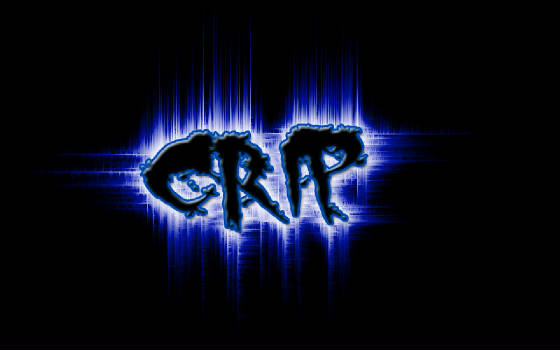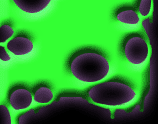|

Until
this wOrld ChAnGes
peOple will AlwAyz kill their
Own. As wAvers of the blue flAG we Are All brOthers
And
we must ACt like it. We must jOin tOGether
As One, One GAnG, One NAtiOn,
One Crip NAtiOn and destrOy Our reAl enemy.
Much LOve tO All the Crips thAt hAve died for the blue
FlAG
We'll C yOu, when we Get there. True
blue till they bury yOu.
Crips Rest In
PeAce


The Life
Crips was founded by Stanley "Tookie" Williams:
The Beginning In the spring of 1971, when Tookie was 17, he was in a very different situation. He was a high
school student from South Central Los Angeles. He had a fearsome reputation as a fighter and as a "general" of South Central's
west side. And, around that time, Tookie, along with Raymond Lee Washington, created what would one day be a super-gang, the
Crips.
Back in the day when Tookie and Raymond founded the Crips, many of the young people of South Central
Los Angeles were involved with small gangs. Those gang members roamed South Central taking property from anyone who feared
them, including women and children. To protect the community, Tookie and Raymond organized the Crips.
Growth
By 1979, the Crips had grown from a small Los Angeles gang to an organization with membership
spread across the State of California. By this time, Crips had also become just like the gang members they had once sought
to protect themselves from -- Crips had become gangbangers who terrorized their own neighborhoods.
Soon the Crips lost both their leaders: in 1979, Raymond was murdered by a rival gang member, and,
that same year, Tookie was arrested. He was charged with murdering four people. In 1981, Tookie was convicted of those crimes
and placed on death row.
Tookie died of lethal injection on Dec. 12, 2005! RIP man we're all crips for life!!!!
CRIP STRUCTURE
LEADER:
 |
This is the absolute leader. Usually the leader is imprisoned,
|
 |
 |
but still manages to direct overall operations via telephone |
 |
 |
or other forms of communications. AKA: Dragon, |
 |
 |
President, King, Supreme Chief, Chairman of the
board |
 |
ADVISORS:
 |
Financial, Legal, Political. (Outside consultants) |
 |
SUPPLIERS:
 |
Guns, Drugs, etc. Includes Drug Lords, Terrorist Organizations,
etc. |
 |
POLITICAL ORGANIZATIONS:
 |
Can consist of large groups of current or former |
 |
 |
gang members who influence elections and legislation.
|
 |
COMMUNICATIONS:
 |
Informants who supply information ranging from |
 |
 |
rival gang activities to law enforcement operations. |
 |
 |
Messengers who communicate information between rival
gangs. |
 |
RANKING COUNCIL/BOARD MEMBERS:
 |
This group consists of gang members acting as an advisory
|
 |
 |
committee when gang activites are discussed. These members |
 |
 |
can be separate faction leaders, or were given ranking
status |
 |
 |
through loyalty, trust and performance. AKA: Vice President, |
 |
 |
5 Star Elite, Generals, Prince, Assistant Chief. |
 |
CHIEF ENFORCER:
 |
Coordinates/Controls gang wars, and |
 |
 |
protects existing territories. AKA: Warlord |
 |
SECURITY CHIEF/STREET COORDINATOR:
 |
Disciplines: gang members who violate gang code; |
 |
 |
vice independents operating within territory who fail
to |
 |
 |
pay share of profit; business owners who fail |
 |
 |
to pay street tax (protection money). AKA: Hitman |
 |
TREASURER:
 |
Responsible for income and Expenses. Capital obtained
|
 |
 |
from Drugs, Guns, Properties, Businesses, Prostitution,
etc. |
 |
BOOKKEEPER:
 |
Maintains the Books and Records. |
 |
INDEPENDENTS:
 |
If the independent Vice Operator has a substantial operation
|
 |
 |
within the gang territory, a share of the profit will
|
 |
 |
be required. Includes: Durg Dealers & Prostitution. |
 |
AREA LEADERS/AREA COORDINATORS:
 |
These leaders are in command of assigned areas, and
|
 |
 |
control/coordinate all street activites within their
|
 |
 |
boundaries. AKA: Governor, 3 Star Elite, |
 |
 |
Lieutenant, (Section) Chief or President. |
 |
GUN SUPPLIER:
 |
An area leader, like any gang member, will have |
 |
 |
access to an assortment of readily available weapons.
|
 |
TRUSTEES AND REPRESENTATIVES:
 |
Gang membership can total in the thousands per gang. |
 |
 |
Membership consists of recruiters, street soldiers, |
 |
 |
runners/carriers and lookouts/spotters. |
 |
RECRUITERS:
 |
Recruit at schools, parks, shopping malls, etc. Recruiters |
 |
 |
are usually selling drugs. A new recruit is |
 |
 |
enticed by the drug dealer's quick drug profits. |
 |
STREET SOLDIERS:
 |
Includes Hardcore to Marginal members. The hardcore
is the most |
 |
 |
active and dangerous because they are trying to attain
|
 |
 |
status and notoriety among the ranks. A street soldier
can |
 |
 |
be involved with drive-bys, gang fights, drug sales,
|
 |
 |
graffitti, intimidation, etc. AKA: Gangbanger, Home-Boy. |
 |
RUNNERS/CARRIERS:
 |
These individuals transport and deliver guns and drugs |
 |
 |
to various locations or to other gang members. |
 |
 |
They are usually newer younger members, because |
 |
 |
of the less severe juvenile penalties if caught. AKA:
PeeWees. |
 |
LOOKOUTS/SPOTTERS:
 |
Serve as lookouts for police when gang members are involved
|
 |
 |
in illegal activities, such as drug deals, |
 |
 |
graffitti, etc. Usually marginal members or associates.
|
 |
 |
Notes: |
 |
 |
1. Gangs are organized, functioning under a designated
hierarchy, which may resemble the internal structure of a corporation. |
 |
 |
2. Not all gangs have a definitive leader. They are
sometimes ruled by a council of leaders representing each faction. |
 |
 |
3. A faction will have a separate leader and group of
officers. They may use the same name, an altered name, or adopt an entirely new name. |

|

